Silver City, Idaho’s Ghost Town Cemetery
Silver City, Idaho’s Ghost Town Cemetery
.
Note: All photographs taken by Kristin Holt unless otherwise labeled.
.
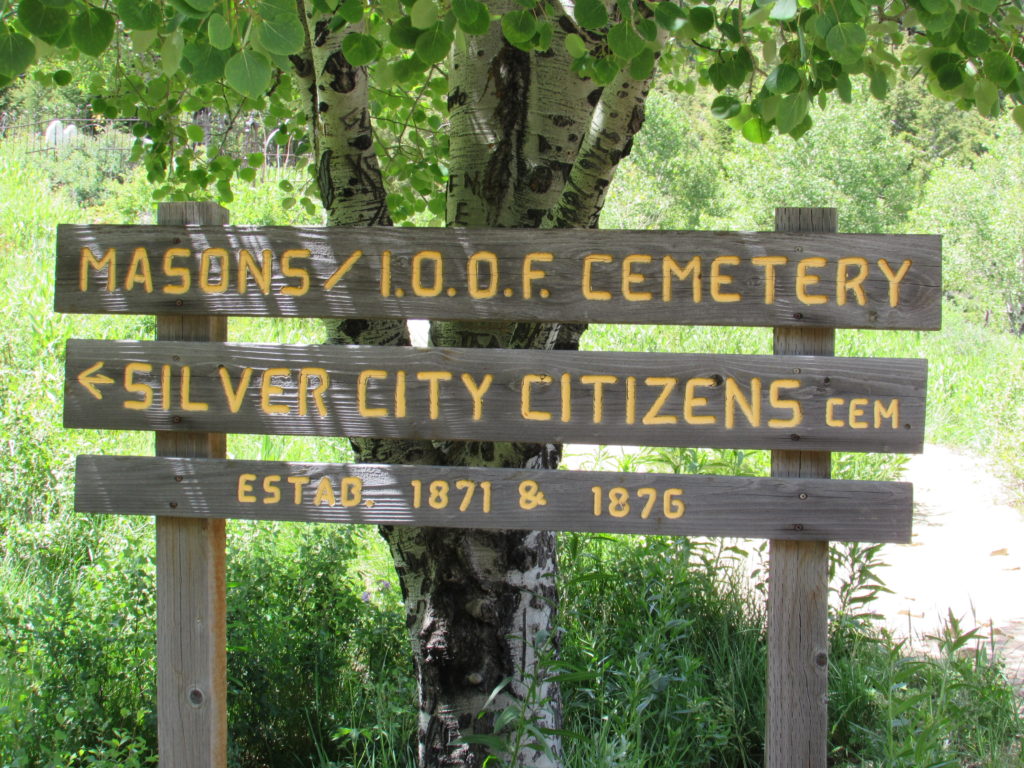
Cemetery signs at the entrance to both the Masons and Silver City Citizens Cemeteries, established 1871 and 1876. Silver City, Idaho.
.
Some might say that visiting pioneer- and frontier-era cemeteries is morbid. I argue that respectfully walking through such places and pausing to read the headstones and ponder on the lives of those who lived in the community is one way to remember them.
I never knew any of these people. Nor have I ancestral ties to Silver City, Idaho. But to walk the streets of their historic town, to consider what life must have been like for them, I can’t help but mourn. Why? I’m a mother, too. I feel a kinship with them because, above all else, these were real people. People who lived.
.

.
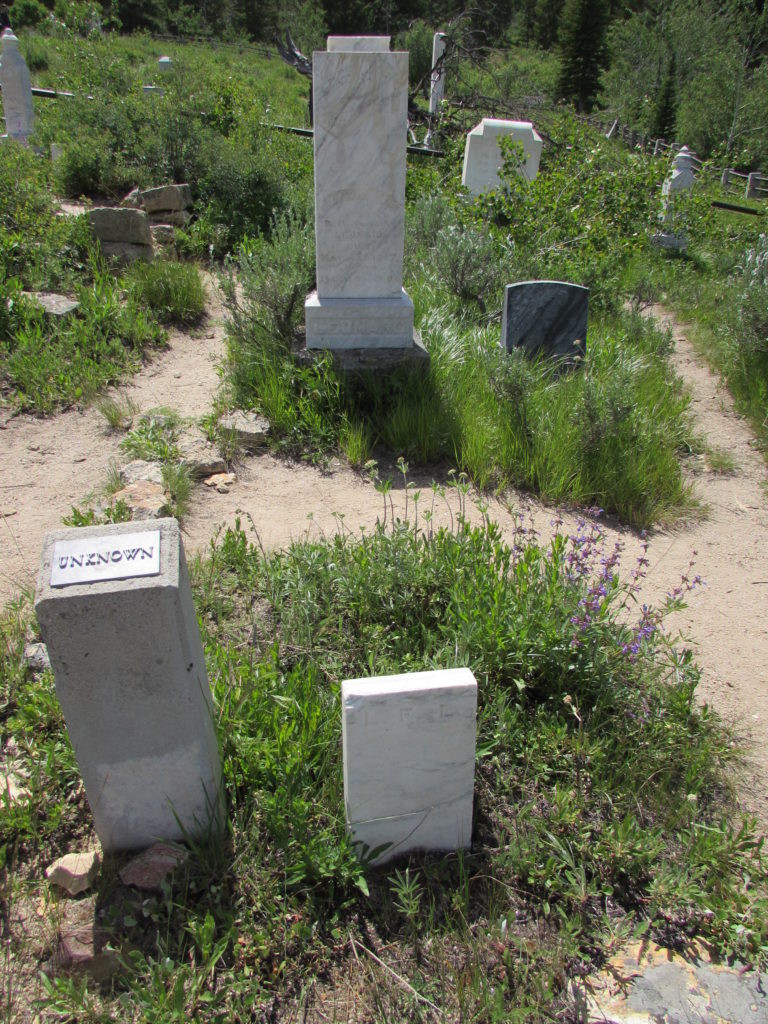
Historic Silver City, Idaho’s Cemetery. Notice the newer market made predominately of concrete labeled UNKNOWN in the lower left-hand corner.
.
Grave Guards and Arches
.
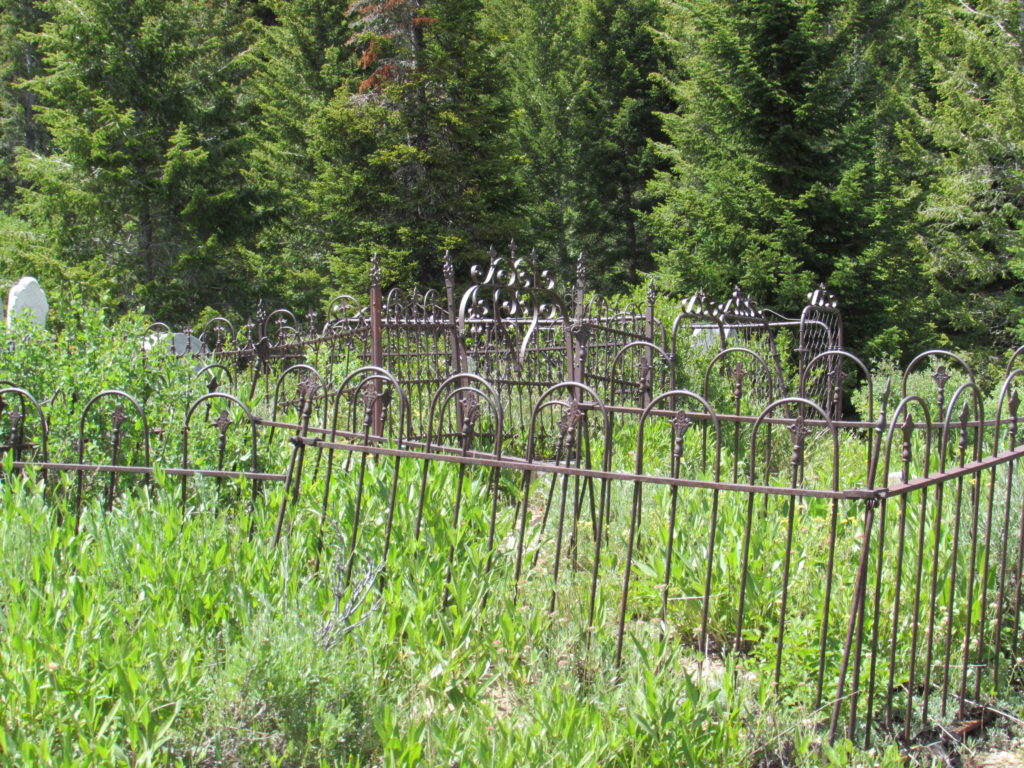
One common feature of Victorian-era cemeteries are fences around individual or family plots within the larger cemetery. Such Mourning Fences were available for purchase from catalogues such as Montgomery Ward & Co. This photo shows several separate fences encompassing small family plots of two to four graves each. Image: Kristin Holt, June 2016.
.
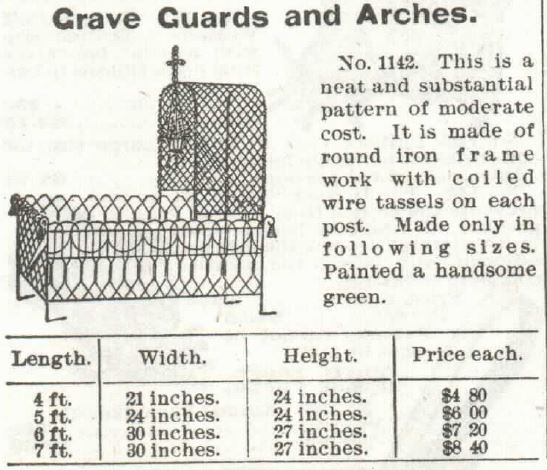
Grave Guards and Arches, Sears & Roebuck Co. Catalog #104, 1897.
.
.
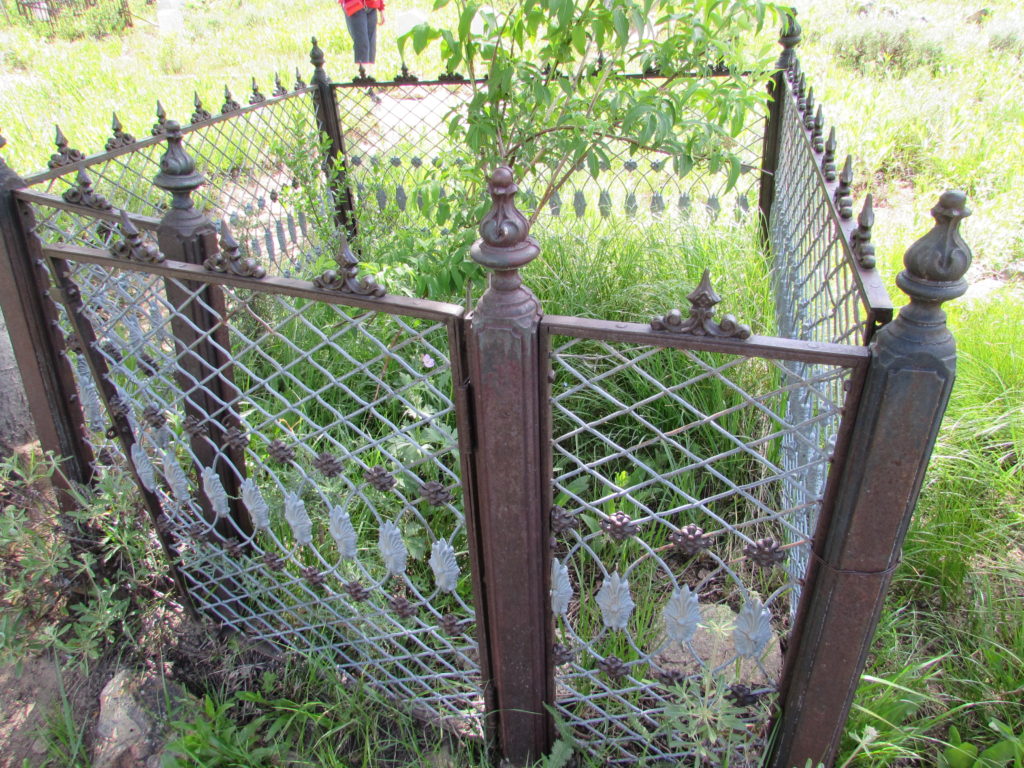
Closeup of a single Mourning Fence, encompassing one family’s plots within the city cemetery.
.
Silver City’s Headstones Tell Stories
.
Mother and Child
.
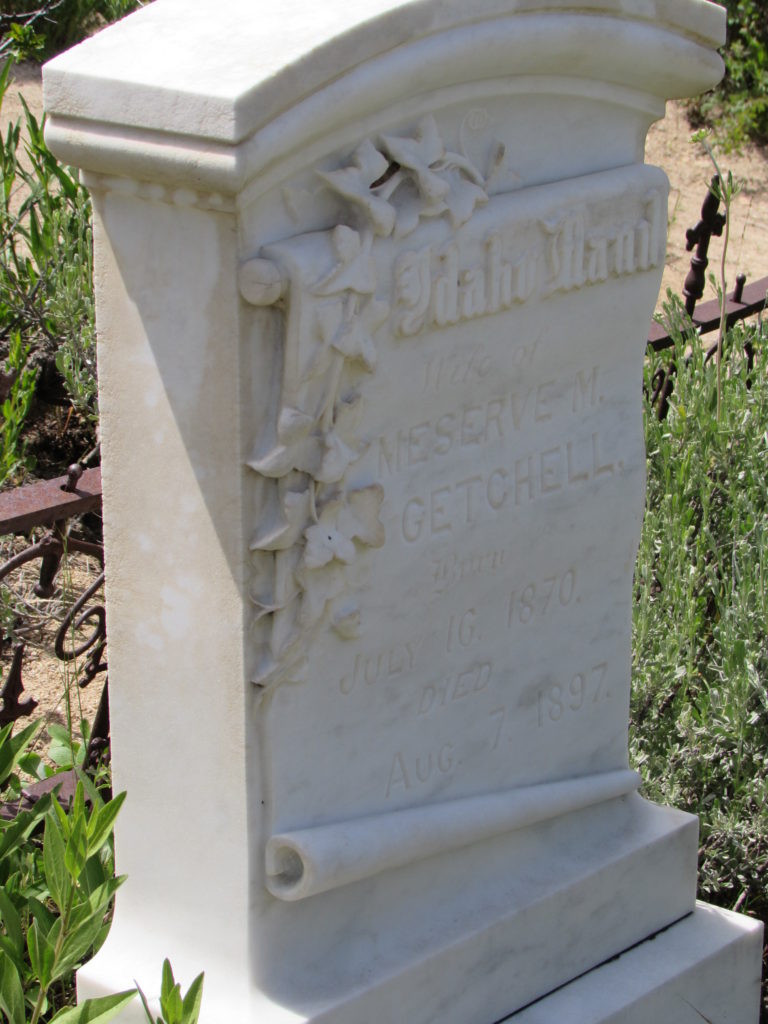
Maud Getchell’s Headstone. Born July 16, 1870. Died August 7, 1897.
.
This pair, mother (above) and son (below), tell an all-too-familiar tale. Maud Getchell passed away shortly after her 27th birthday. Women bore tremendous risk with pregnancy and childbearing. One has to wonder if her mortality was connected. I wish I’d moved the plants enough to see what year in the 1890’s Maud’s infant son died. Given the August/September date differences, and the boy living only 8 days, I suppose these losses were not the same summer.
.
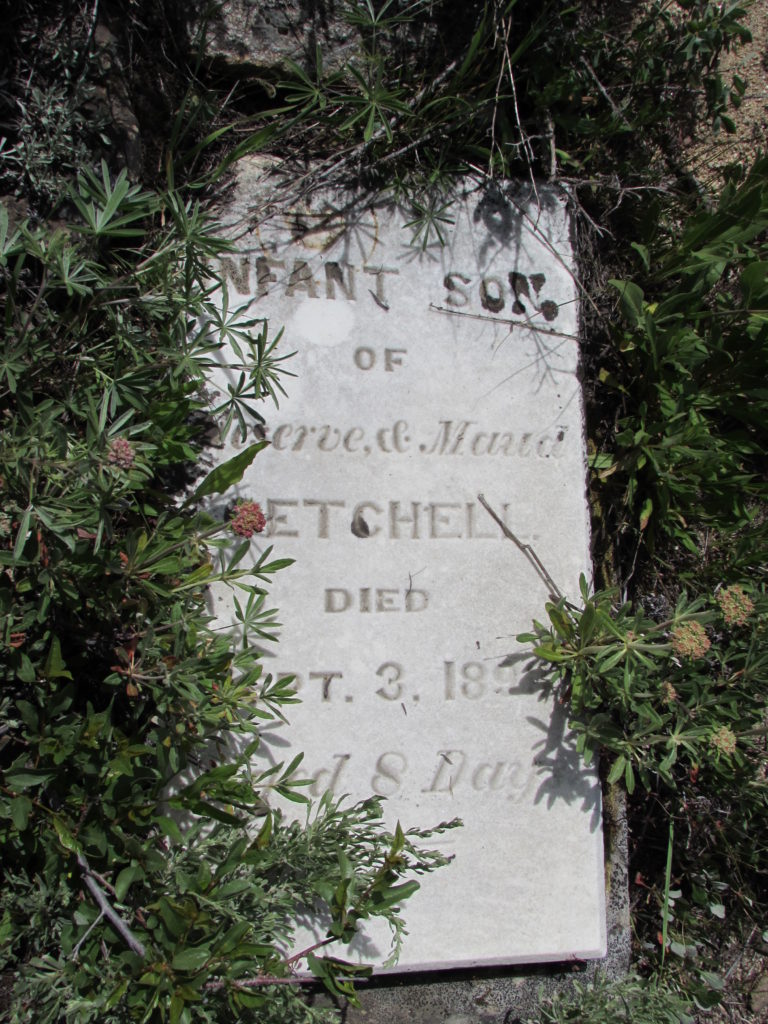
Meserve and Maud Getchhell’s Infant Son, died Sept 3, 189X, lived 8 days.
.
At the turn of the 20th century, 1 in 4 children died before their 5th birthday. This mortality rate must have seemed promising to parents at that time. After all, just 100 years earlier, over 46% did not live to age 5.
.
Twice the Joy, Twice the Loss
.
This next pair of photographs tells another tale–both joy and sadness. Twin daughters were born in September of 1902. Zelma Elizabeth and Arline Smith were born the same day of the same parents. One died at 2 1/2 weeks of age, the other at roughly 11 months.
.
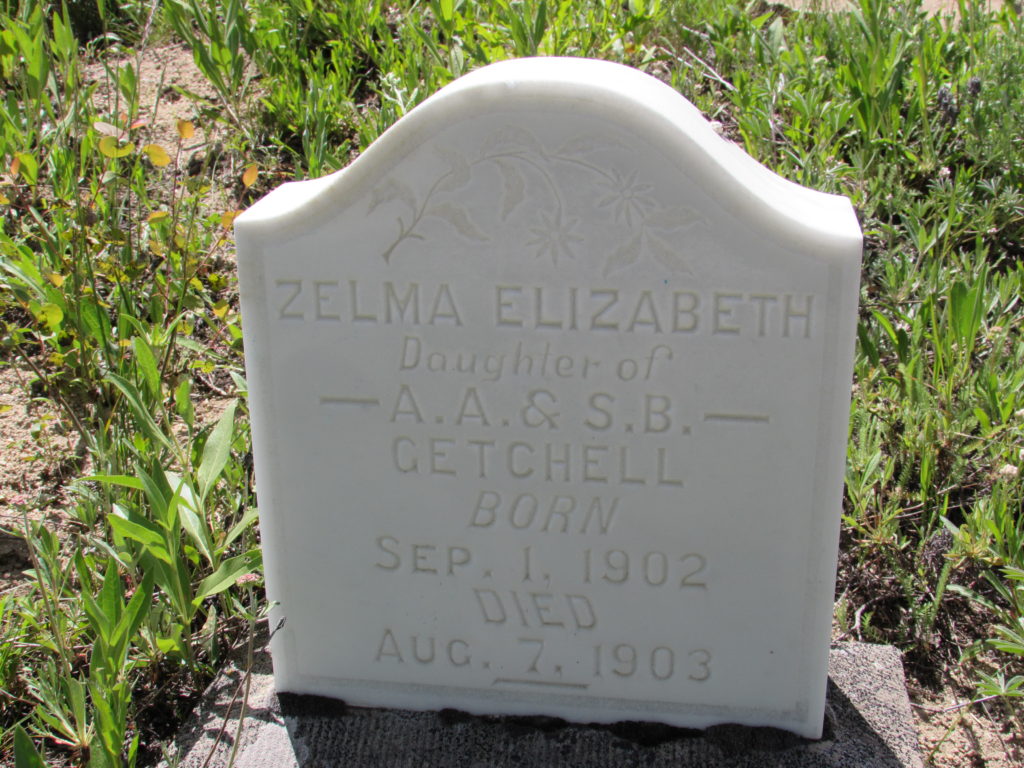
Zelma Elizabeth, Daughter of A.A. & S.B. Getchell. Born Sep. 1, 1902, Died Aug. 7, 1903.
.
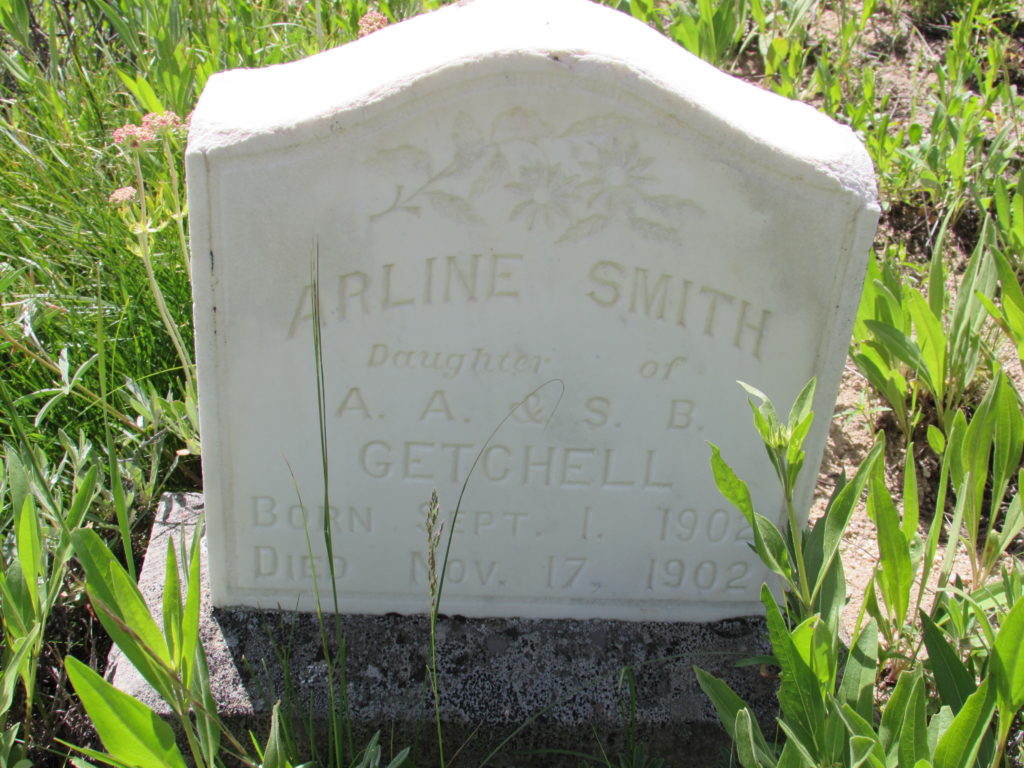
Arline Smith, Daughter of A.A. & S.B. Getchell, Born Sept. 1, 1902, Died Nov 17, 1902.
.
All in the Family
.
Family clusters within cemeteries reveal much. Note this pair of expensive marble monuments for father (behind, left) and infant daughter (center front). Surviving inscriptions indicate the Williams family lived in or near Silver City for several years after the loss of their 14-month-old daughter. Her father died in his 54th year. A mining accident? Illness? Injury?
.
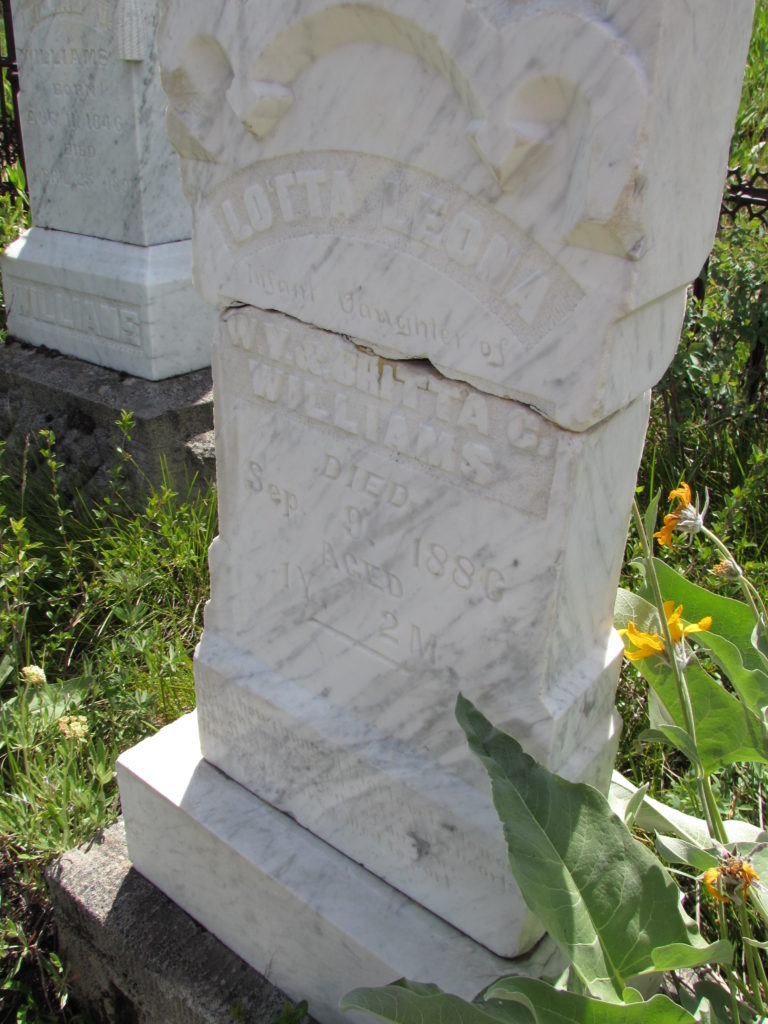
Lotta Leona, Infant daughter of W.V. & Britta C. Williams, Died Sep. 9, 1886, Aged 1 Y, 2 M. In the background, far left, Lotta’s father’s stone is visible. It reads: William V. Williams, born Aug 11, 1846. Died April 25, 1891.
.
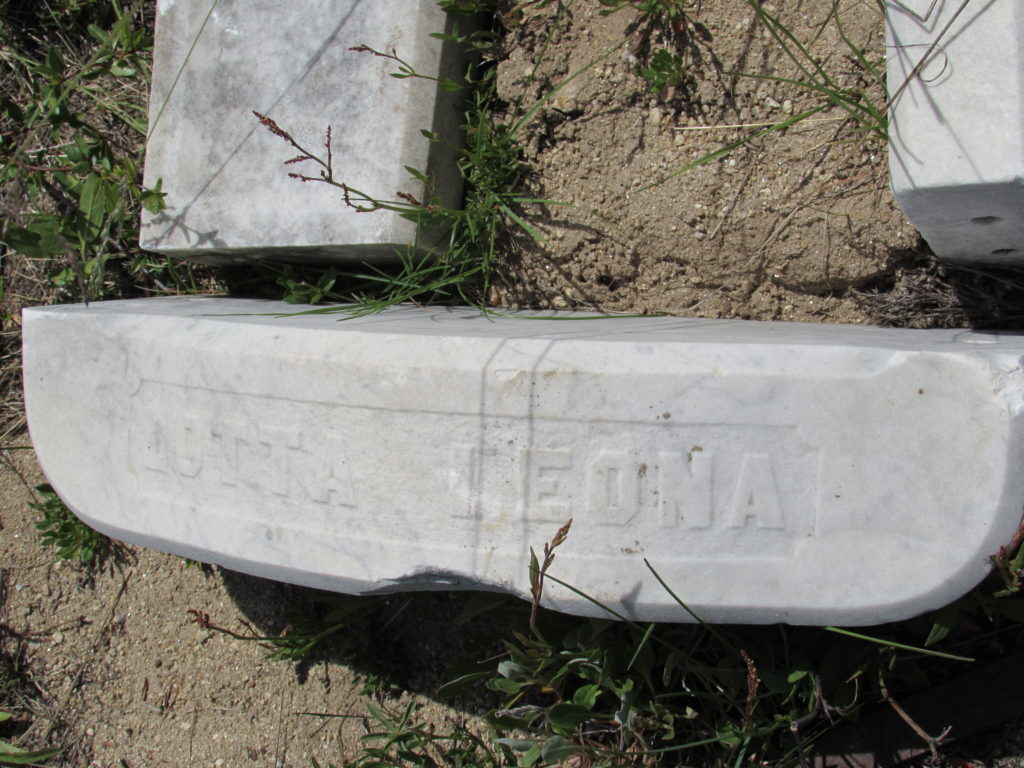
Footstone at the bottom of 1 year-old Lotta Leona Williams’s grave. The side blocks of granite outline the child-size burial plot.
.
A Victorian Sexagenarian
.
At last! An old man! Wm. S. Stevens enjoyed a long life. His headstone records he lived from 1829 through 1898. Sixty-nine years!
This longevity is astounding. Born in 1829, William’s life expectancy topped at about 51. Through the mid- and late-nineteenth century, males who survived to age 5 might expect to live only to their mid-forties. Women, on the other hand, faced myriad threats related to pregnancy and childbirth. In 1900, 1 out of 100 American women died because of pregnancy/childbirth.
.
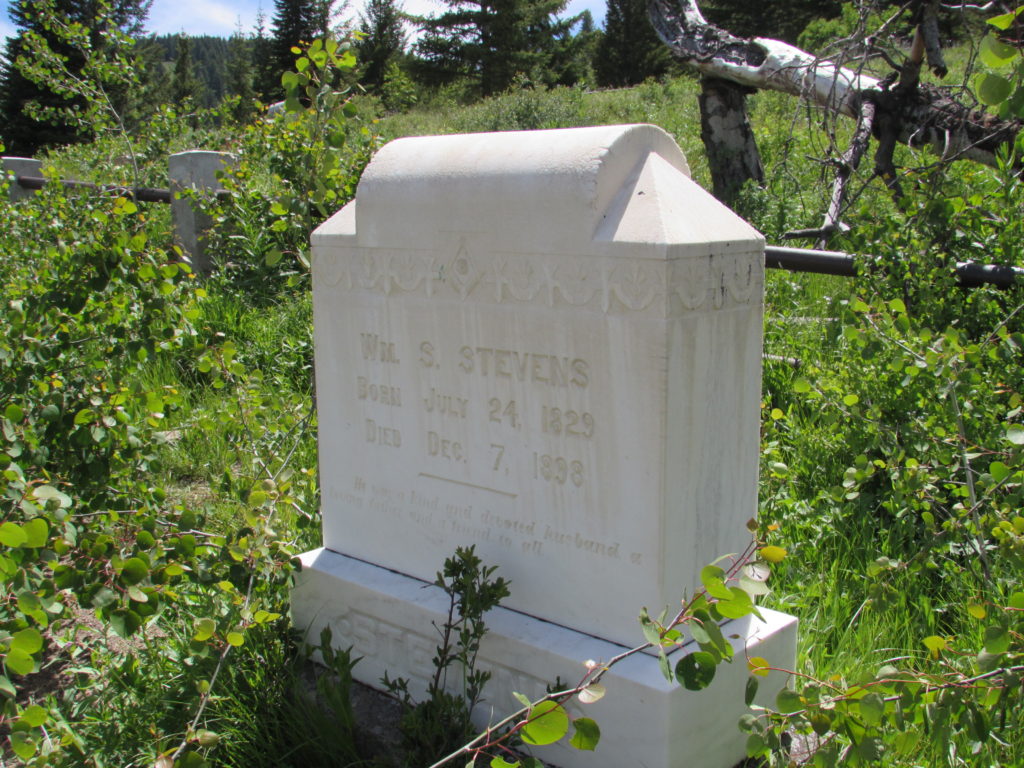
Wm. S. Stevens Headstone, Born July 24, 1829, Died December 7, 1898.
.
Who was Philip?
.
Some markers provide little information. Among the lasting marble monuments, between the numerous markers tagged “unknown,” are a few with only a name. Nothing more. No death date, no age. Was Philip Douglas new to town? Might he have been the quiet type that no one knew well?
Someone remembered Philip. Marble markers take time to produce and funds to pay for.
.
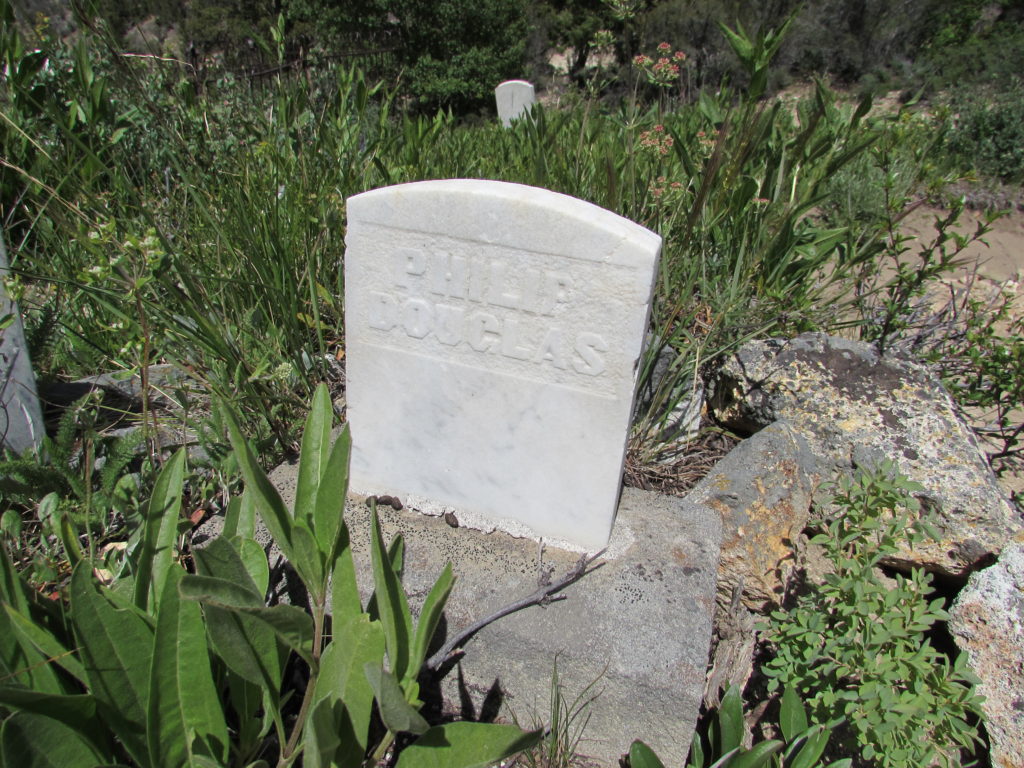
This marker, for Philip Douglas, gives only his name.
.
One Headstone, Two People
.
In contemporary times, dual headstones are common (at least in the American west) for married couples. This vintage stone marker remembers siblings. The stone has worn over time, leaving poor relief and visibility.
Were these siblings lost to illness occurring at the same time? Or had the children perished separately?
.
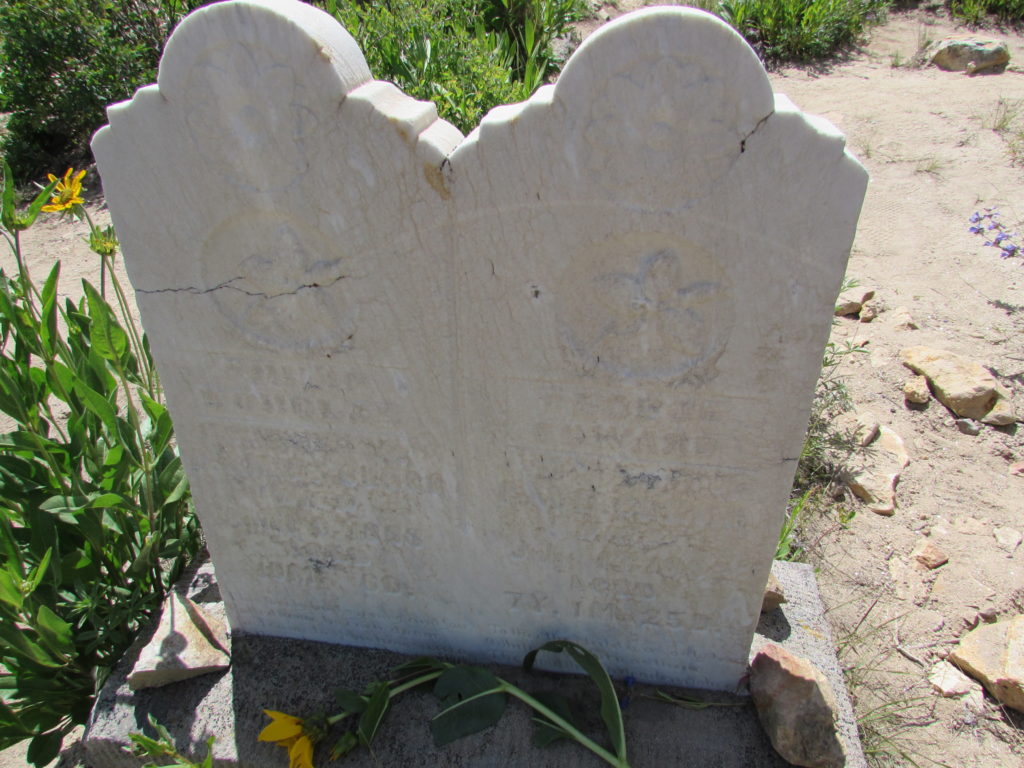
The engraving was very difficult to make out, but the ages of the children were more readable. The one on the left is 10 months and the one on the right, 7 years.
.
A second double-headstone, this one for Helene Emilia Grete and Albert John Grete (sister and brother) died three years apart. The engraving tells the sad story of children lost at 16 months and 4 years. Parents often had large families for a variety of reasons. Families with many children had more hands to do the farming, further ensuring the survival of all.
.
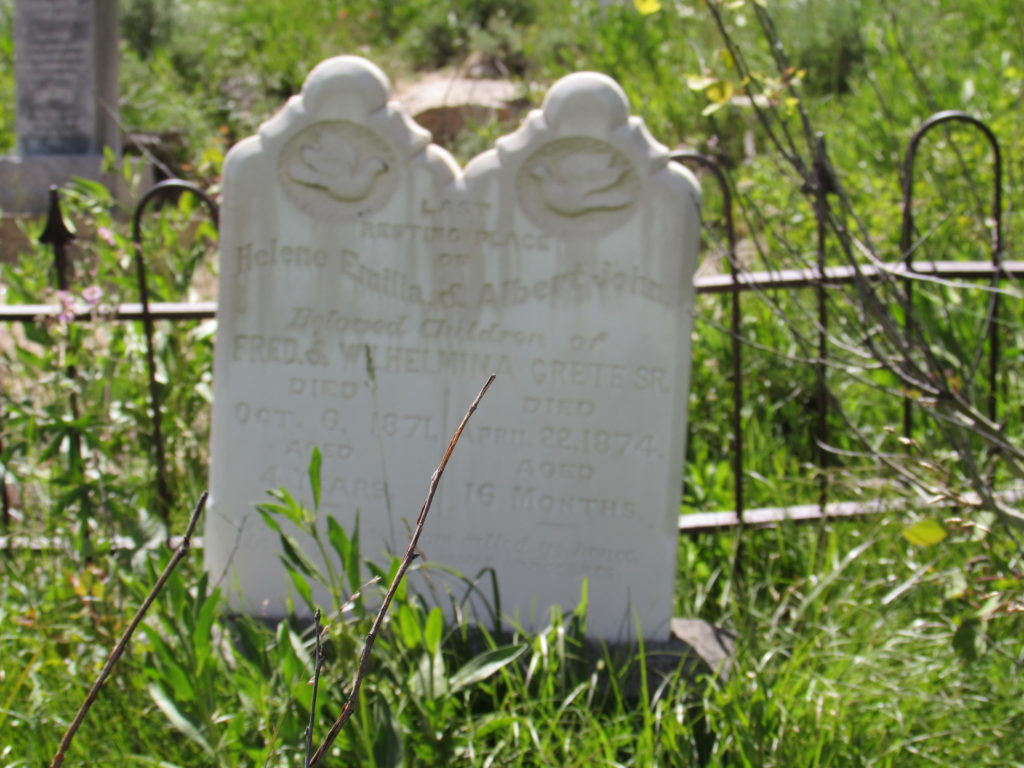
Last Resting Place of Helene Emillia & Albert John, Beloved Children of Fred & Wilhelmina Grete Sr. Died October 6, 1871, Aged 4 Years. Died April 22, 1874, aged 16 Months. Note the fence surrounding the Grete family plots. I wonder if/how Emma Grete, pictured below, was related to these two lost children or their parents?
.
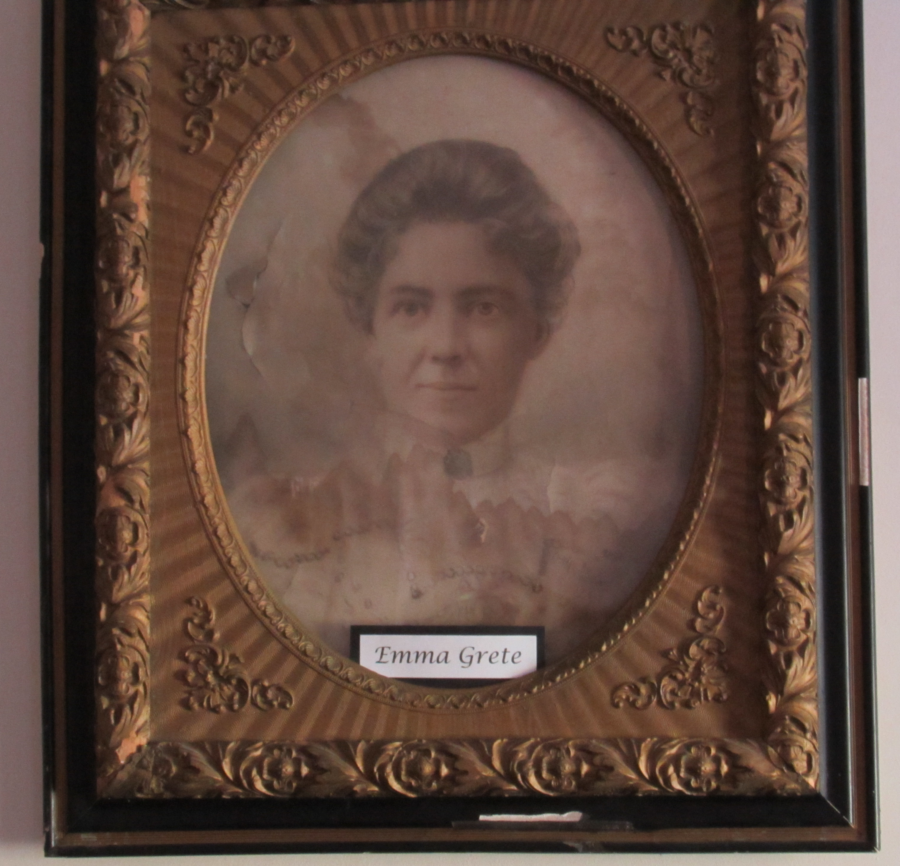
Framed photograph of a late-Victorian era woman identified as Emma Grete. Portrait hangs in the Ladies’ Parlor of the Idaho Hotel.
.
A Man of Fourteen Years
.
How I wish I knew Thomas’s story. At age 14, Thomas was a considered a man. He certainly did the work of a man (unless a highly unlikely set of circumstances prevailed). Had he been a miner? A teamster? Did he ride shotgun for the stage or ore shipments? What happened?
.
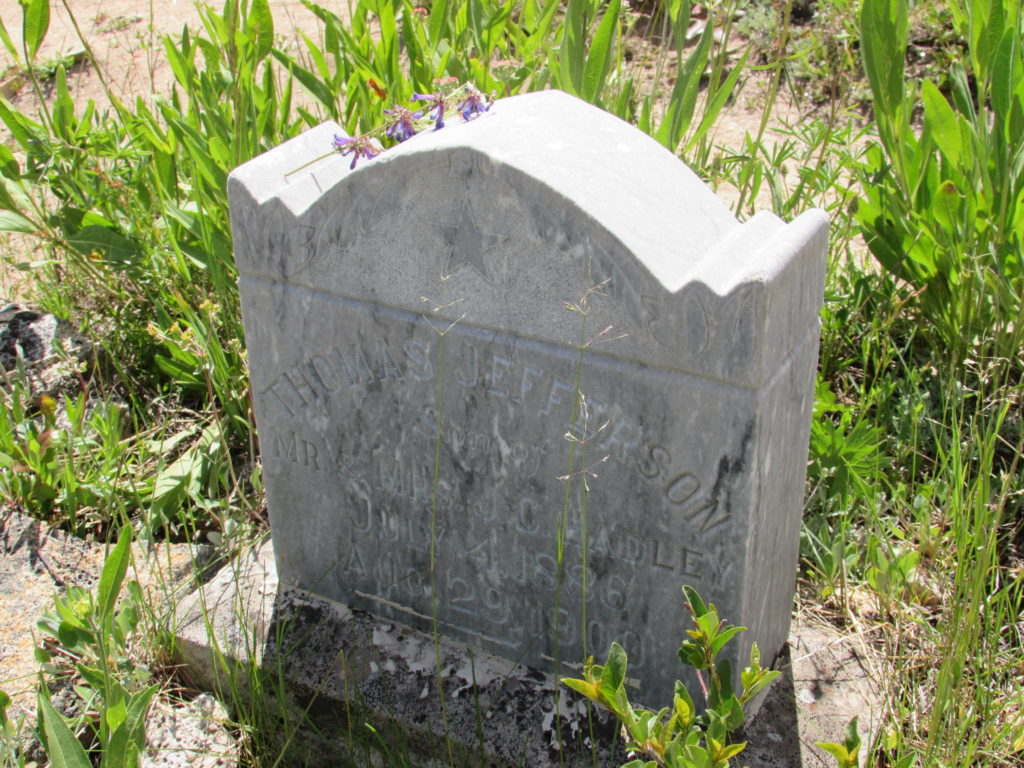
Thomas Jefferson, son of Mr. and Mrs. J.C. Hadley, born July 4, 1886, died Aug. 29, 1900.
.
Headstones and Footstones
.
Did you know footstones were a thing? Until I visited Silver City’s cemetery with other authors steeped in the nineteenth century, did I learn this interesting detail.
.
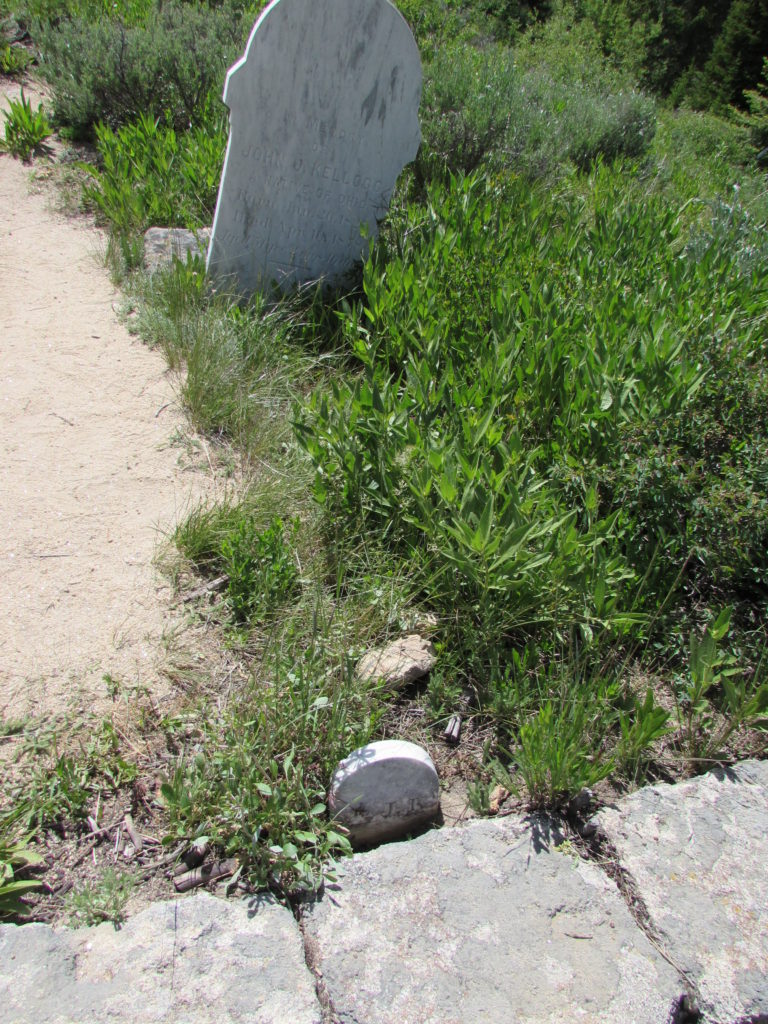
Historic boom-town era grave in Silver City, Idaho’s cemetery. Note the dual Headstone and Footstone visible in pairing. Headstone reads: In Memory of John J. Kellogg, a native of Ohio. Born January 26, 1825. Died April 10, 1878. Aged 51 years, 2 mos, 16 days. This custom of recording the length of life in years, months, and days was common in the Victorian Era American West.
.
Rock Borders Surround Graves
.
Harry’s grave, below, may have been lovingly tended by a family member… a long while ago. Notice the stones that mark the borders of Harry’s resting place. The headstone and footstone appear at the expected places.
.
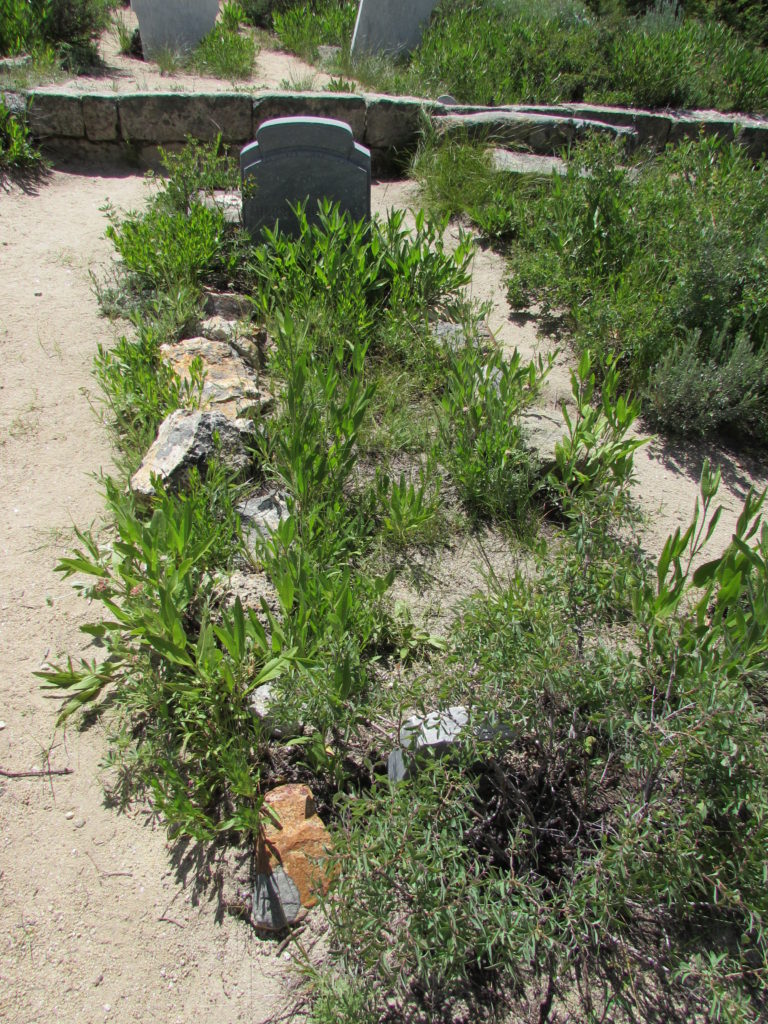
Quite different from modern-day cemeteries with manicured lawns, note this boom-town era grave roughly outlined in stone. Monument reads: Harry Sullivan. A native of NY. April 15, 1845 to Nov 17, 1XXX. I should have moved the vegetation.
.

.
Related Articles
.

Contains the ‘Cemetery Scene’ in Courting Miss Cartwright. Felicity, new to Mountain Home and seeking answers. visits the cemetery and notices yellow roses on her father’s grave.
.
Updated April 2022
Copyright © 2016 Kristin Holt, LC
Silver City, Idaho’s Ghost Town Cemetery
All images, unless otherwise identified Copyright © 2016 Kristin Holt, LC. Images may be shared as long as this web page is referenced (with a clickable link to this page: https://www.kristinholt.com/archives/6485 ) and credit is properly attributed to Kristin Holt, LC.

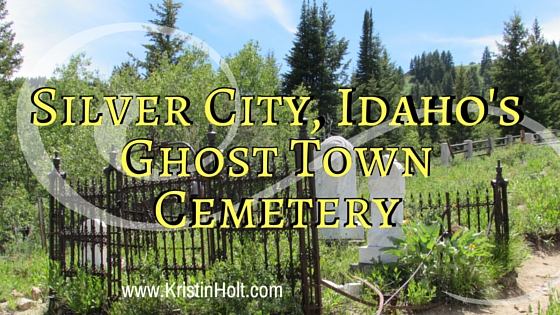



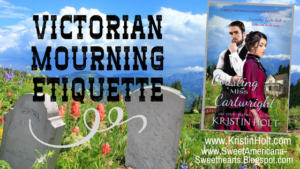











Hi Kristin, I came across your website while searching for a relative born in the 1860s, whose last known location was Silver City. Do you know if there is any sort of burial index for the cemetery there?
Hi Matt–
I imagine that someone has put together a burial index for Silver City, Idaho. It’s possible a wider index, such as “Find A Grave” will have the information you seek. I know my friend who went with me on this trip to Silver City added content to “Find A Grave”.com upon our return.
Wishing you the best in your search–
Kristin
Apologies for the delayed response, Kristin. Thanks for your suggestion, I’ll check that out.
You’re most welcome, Matt. Happy to be of assistance.